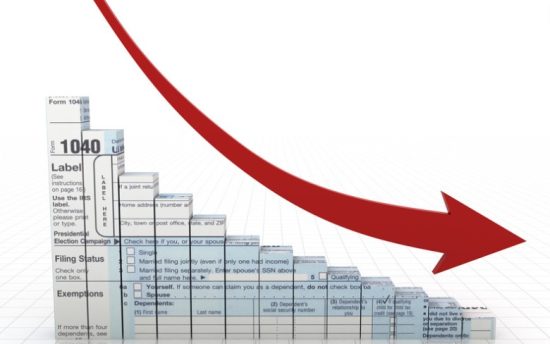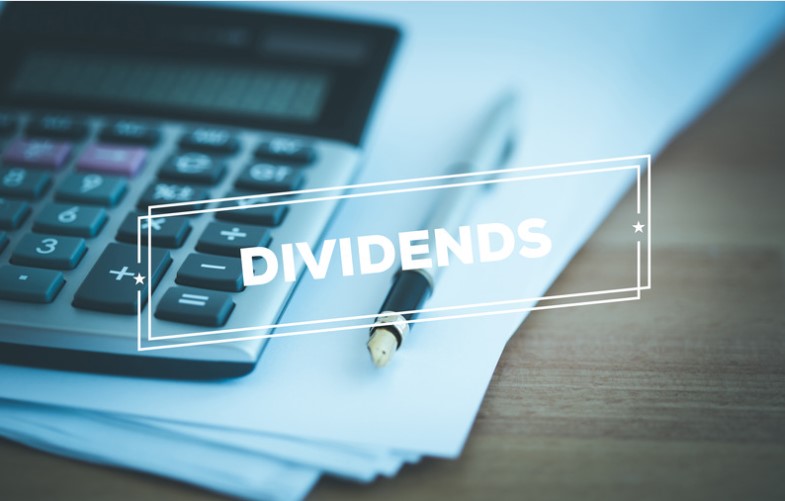Welcome to the world of investing, where your hard-earned money has the potential to grow and work for you. Understanding how dividends are taxed is crucial if you’re considering diving into the Canadian stock market. After all, nobody wants tax headaches when they could be enjoying a steady stream of passive income! So let’s unravel the mysteries together and explore the ins and outs of how dividends are taxed in Canada.
We’ve got you covered from different types of dividends to strategies for reducing your tax bill! Get ready to navigate this financial landscape with confidence and make those dividend dollars work even harder for you. Let’s get started!
What are Dividends?

When a company makes a profit, they have two options to reinvest that money into the business or distribute it to its shareholders as dividends. It’s like receiving a bonus for being an investor!
Dividends can come in different forms, such as cash payments or additional shares of stock. These payments are usually made regularly, whether it be quarterly, semi-annually, or annually. So not only do you get to enjoy potential capital appreciation when the stock price goes up, but you also receive these sweet dividend payouts.
But why do companies even bother with dividends? Offering dividends is one way for companies to attract investors and maintain shareholder loyalty. By sharing their profits with shareholders, they’re essentially saying “thank you” for investing in their company and trusting them to grow their wealth.
It’s important to note that not all companies pay dividends. Some newer or smaller growth-oriented companies may reinvest all their profits into the business rather than distribute them as dividends. So if you’re someone who loves those regular income streams from your investments, make sure to consider this aspect when choosing which stocks to invest in.
Now that we understand what dividends are and why they matter, let’s dive deeper into how these payouts are taxed here in Canada!
The Different Types of Dividends
When it comes to dividends in Canada, it’s important to understand that they come in different types. Each type has its own characteristics and tax implications. Let’s take a closer look at the different types of dividends.
- First, we have eligible dividends. These are paid out by Canadian corporations that meet certain criteria set by the government. Eligible dividends are generally subject to a lower tax rate than other types of income, making them an attractive option for investors.
- On the other hand, we have non-eligible dividends. These are paid out by Canadian corporations that do not qualify for the preferential tax treatment given to eligible dividends. Non-eligible dividends are subject to a higher tax rate compared to eligible dividends.
- Another type of dividend is known as return on capital (ROC). This occurs when a company returns some or all of an investor’s original investment through dividend payments. ROC is not considered taxable income until it exceeds the original cost base of your shares.
- There are deemed dividends. These occur when certain transactions between individuals and corporations are treated as if they were actual dividend payments for tax purposes.
- Understanding these different types of dividends is crucial in determining how they will be taxed in Canada and what strategies you can employ to optimize your tax situation. Stay tuned for our next section, where we delve deeper into how these various types of dividends are taxed!
How are Dividends Taxed in Canada?

Dividends are a popular form of investment income in Canada, and understanding how they are taxed is vital for any investor. The taxation process can seem complex, but breaking it down into manageable chunks can help simplify things.
- It’s important to understand the different types of dividends. There are two main categories: eligible and non-eligible dividends. Eligible dividends come from corporations that the Canadian government has granted specific tax advantages. On the other hand, non-eligible dividends come from corporations that do not qualify for these advantages.
- Both eligible and non-eligible dividends are subject to gross-up rules, where the actual dividend received is increased by a specified percentage for tax purposes. This means that you will be taxed on an amount higher than what you received as a dividend.
- Once the grossed-up amount has been determined, it is then subject to federal and provincial/territorial dividend tax rates. These rates vary depending on your total income level and location within Canada. To further complicate matters, there may also be additional taxes such as the Alternative Minimum Tax (AMT) or surtaxes imposed by certain provinces or territories.
- Reducing your tax bill on dividend income requires careful planning and consideration of various strategies available. For example, investing in Tax-Free Savings Accounts (TFSA) can provide an opportunity to earn tax-free income from investments, including eligible dividends.
- Understanding how dividends are taxed in Canada is crucial for investors seeking to maximize their returns while minimizing their tax liability. By familiarizing yourself with the different types of dividends, knowing about applicable tax rates and exploring effective strategies for reducing taxes on dividend income – you’ll be well-equipped to make informed decisions regarding your investment portfolio.
What is the Dividend Tax Rate in Canada?
When it comes to dividend taxation in Canada, understanding the tax rates in Canada is crucial. The rate at which dividends are taxed depends on whether they are classified as eligible or non-eligible dividends.
- There is more favourable tax treatment for eligible dividends paid out by Canadian corporations that meet specific criteria. These dividends qualify for the enhanced dividend tax credit (EDTC), resulting in a lower overall tax liability for shareholders.
- On the other hand, non-eligible dividends, also known as “regular” or “ordinary” dividends, do not qualify for the EDTC. Therefore, they are subject to higher tax rates compared to eligible dividends.
- Canada’s exact dividend tax rates vary depending on your income and province of residence. Qualified dividends are taxed at a rate of 15.0198 percent, while non-qualified payouts are subject to a 9.031% tax.
- It’s important to note that these rates are approximate and can change over time due to adjustments made by the government. It’s always advisable to consult with a professional accountant or financial advisor who can provide personalized guidance based on your specific circumstances.
- Understanding Canada’s different dividend tax rates is essential for investors looking to minimize their overall tax burden while maximizing their investment returns. By being aware of these rates and considering strategies such as income splitting or utilizing registered accounts like Tax-Free Savings Accounts (TFSAs) and Registered Retirement Savings Plans (RRSPs), individuals can effectively manage their taxes and optimize their investment strategies.
Strategies for Reducing Your Tax Bill on Dividend Income

When it comes to minimizing your tax bill on dividend income in Canada, there are several strategies you can employ. Here are a few options worth considering:
- Utilize your Tax-Free Savings Account (TFSA): One effective way to reduce taxes is by investing in dividend-paying stocks within your TFSA. Any income earned within this account is completely tax-free, allowing you to grow your investments without the burden of taxation.
- Opt for eligible dividends: Eligible dividends benefit from a more favourable tax treatment than non-eligible dividends. By focusing on investments that pay out eligible dividends, you can lower the taxes owed on your dividend income.
- Maximize capital gains exemptions: If you have significant holdings in certain small businesses or qualified farm or fishing properties, consider utilizing the lifetime capital gains exemption when selling these assets. This strategy can help offset any potential taxes owing on dividend income.
- Splitting with family members: Another strategy involves sharing your dividend income with family members who may be taxed at lower rates or have unused tax credits available. However, it’s important to ensure compliance with relevant attribution rules and seek advice from a professional before implementing this strategy.
- Seek professional advice: Consulting with a knowledgeable tax advisor can provide valuable guidance tailored to your specific financial situation and goals.
Remember, while reducing taxes legally is advantageous, always prioritize long-term investment objectives over short-term savings alone.
Conclusion
In conclusion, investing in dividends is a great way to make money over the long term. It is important to understand how dividends are taxed in Canada so that you can maximize your investments and keep more of your returns. With proper planning and understanding of the taxation rules for dividend income, investors will be able to ensure their investments are as profitable as possible while meeting their obligations with the Canada Revenue Agency.
FAQs -How are Dividends Taxed in Canada
1. Are dividends taxed twice in Canada?
The dividend tax credit is provided to avoid double taxation because the Canadian corporation that issued the dividend had paid taxes on the income received. The rates for eligible and ineligible tax credits are determined by what the corporation would have paid in taxes.
2. How do you avoid tax on dividends?
If you invest money in a Roth retirement account or purchase dividend stocks in a tax-advantaged education account, you may be able to completely avoid paying income taxes on dividends if your income is too low to qualify for zero capital gains.
3. Are dividends taxed in TFSA?
Interest, dividends, and capital gains received on TFSA assets are generally not taxable, either while kept in the account or when withdrawn.
4. Are dividends taxed if reinvested Canada?
You may not get the income on your information slips if you reinvest any dividends by purchasing more units or shares. However, you must still record the amounts listed on your income tax and benefit return slips.










